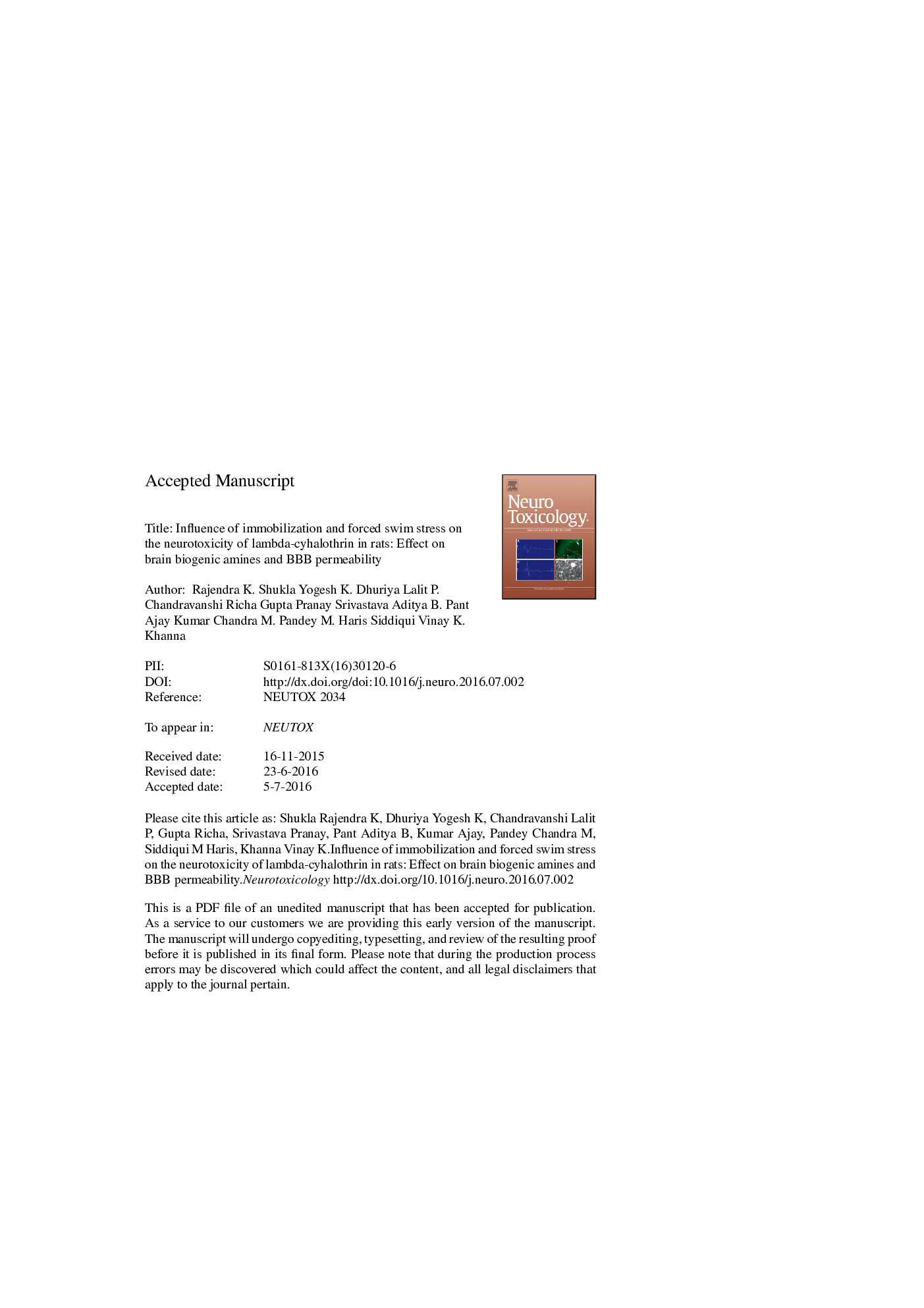| Article ID | Journal | Published Year | Pages | File Type |
|---|---|---|---|---|
| 5560839 | NeuroToxicology | 2017 | 43 Pages |
Abstract
Experimental studies have been carried out on rats to understand the influence of immobilization stress (IMS), a psychological stressor and forced swim stress (FSS), a physical stressor in the neurotoxicity of lambda-cyhalothrin (LCT), a new generation type II synthetic pyrethroid with extensive applications. No significant change in plasma corticosterone levels and blood brain barrier (BBB) permeability was observed in rats subjected to IMS (one session of 15Â min/day), FSS (one session of 3Â min/day) for 28Â days or LCT treatment (3.0Â mg/kg body weight, p.o. suspended in groundnut oil) for 3Â days (26th, 27th and 28th day) as compared to controls. Marginal changes in the levels of biogenic amines and their metabolites (NE, EPN, DA, HVA, DOPAC, 5-HT) in hypothalamus, frontal cortex, hippocampus, and corpus striatum were observed in rats subjected to IMS or FSS or LCT alone as compared to controls. It was interesting to note that pre-exposure to IMS or FSS followed by LCT treatment for 3Â days caused a marked increase in plasma corticosterone levels associated with disruption in the BBB permeability as compared to rats exposed to IMS or FSS or LCT alone. Pre-exposure to IMS or FSS followed by LCT treatment for 3Â days resulted to alter the levels of biogenic amines and their metabolites in hypothalamus, frontal cortex, hippocampus, and corpus striatum as compared to rats exposed to IMS or FSS or LCT alone. Although neurochemical changes were more intense in rats pre-exposed to IMS as compared to those subjected to FSS on LCT treatment, the results indicate that both psychological and physical stress could be important influencing factors in the neurotoxicity of LCT.
Keywords
Related Topics
Life Sciences
Environmental Science
Health, Toxicology and Mutagenesis
Authors
Rajendra K. Shukla, Yogesh K. Dhuriya, Lalit P. Chandravanshi, Richa Gupta, Pranay Srivastava, Aditya B. Pant, Ajay Kumar, Chandra M. Pandey, M. Haris Siddiqui, Vinay K. Khanna,
